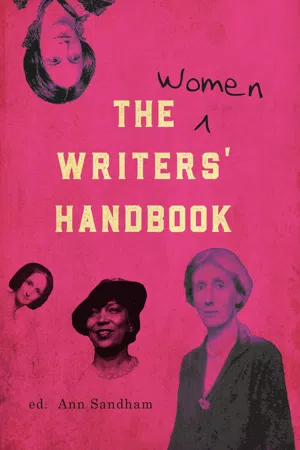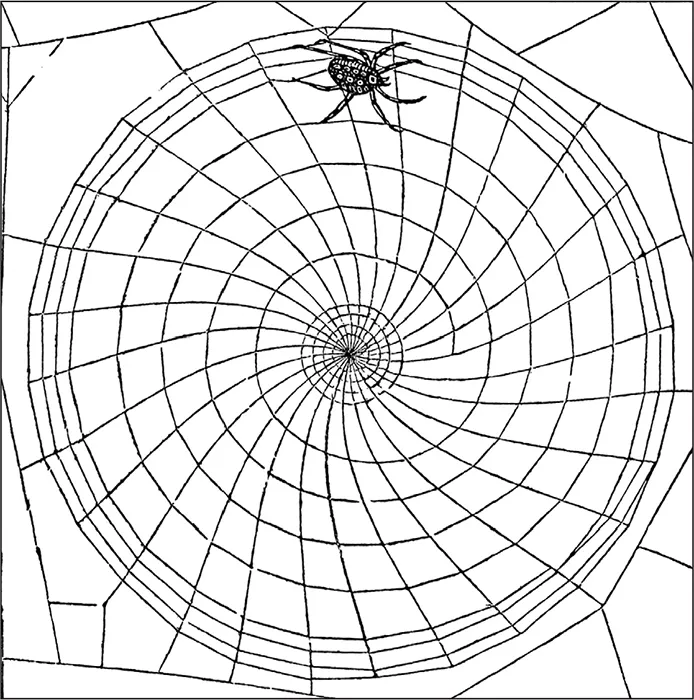
The Women Writers Handbook 2020
- English
- ePUB (mobile friendly)
- Available on iOS & Android
The Women Writers Handbook 2020
About this book
A revised edition of the publisher's inaugural publication in 1990, which won the Pandora Award from Women-in-Publishing. Inspirational in its original format, this new edition features poems, stories, essays and interviews with 30 + women writers, both emerging authors and luminaries of contemporary literature such as:
– Choices: The Writing of Possession by A.S. Byatt
– Becoming a Writer by Saskia Calliste
– Jenny – a song by April de Angelis
– Interview with Kit de Waal
– Anne Hathaway by Carol Ann Duffy
– Let the World Burn through you by Sian Evans
– Early Women Writers by Philippa Gregory
– The Creative Process by Mary Hamer
– The Writing Life by Jackie Kay
– Screen Diversity by Shuchi Kothari
– Writing Plays by Bryony Lavery
– The Novelist as Wanderer by Annee Lawrence
– Interview with Roseanne Liang
– Mei Kwei, I love you by Suchen Christine Lim
– The Badminton Court by Jaki McCarrick
– Interview with Laura Miles
– The Motherload by Raman Mundair
– The Feminist Library by Magda Oldziejewska
– Fortune Favours The Brave … by Kaite O'Reilly
– Interview with Jacqueline Pepall
– The Art of Translation by Gabi Reigh
– Conditions of Amefricanity -Djamila Ribeiro
– Inspiration: Where does it come from? by Fiona Rintoul
– Interview with Jasvinder Sanghera
– A Room of One's Own …or Not? by Anne Sebba
– Being a Feminist Writer by Kalista Sy
– Mslexia by Debbie Taylor
– My Mother, Reading a Novel by Madeleine Thien
– Interview with Clare Tomalin
– Fortune by Ida Vitale, transl. Tanya Huntington
– Interview with Sarah Waters
– Virginia Woolf…100 years on by Emma Woolf
Includes the original writing workshops plus illustrations from contemporary and vintage illustrators. Guest editor Ann Sandham has compiled the new collection.
Reviews:
The Women Writers Handbook is a superb, powerful collection of writings from 30 women that are considered to be the emerging authors and luminaries of contemporary fiction, from Carol Ann Duffy to Kit De Waal. With its short chapters, background to who the author is and with 20% of all profits going towards the campaign for a full-sized statue of Virginia Woolf, the first in the UK, it is absolutely a book to buy, read and help to highlight the creativities of women, as well as inspiring other women to believe that they can also do it too. Not only is every piece of work that is included different, well written and informative but the way that the whole book is laid out with inspiring quotes but also beautiful illustrations from women. I loved the activities that can be found at the end of the book, writing workshop activities that could be used within a group in order to breakdown boundaries, to help overcome the fears and misgivings of individuals who would like to become writers, as well as activities to help create depth in characters. I think this inclusion of interactivity, as well as giving a feminist spin on fairy tales is a cleverly unique concept....its absolutely one to pick up and for a worthy cause too. --thereadingcloset Knowledgeably compiled and deftly edited, 'The Women Writers Handbook'; by Ann Sandham (Commissioning Editor for Ladybird Children's Books at Penguin Random House) also features an informative Foreword by Cheryl Robson (the Aurora Metro Books publisher). Of special note is the inclusion of a instruction article on how to operate a writing workshop, a five page Resource Directory (compiled by Saskia Calliste), and a fun one-page Quiz. Informative, thought-provoking, inspiring, 'The Women Writers Handbook'; is an extraordinary, unique, and thoroughly 'reader friendly' in both organization and presentation. Certain to be an immediate and enduringly popular addition to personal, professional, community, college, and university library Writing/Publishing collections in general, 'The Women Writers Handbook'; is unreservedly recommended for Women's Fiction, Literature, and Writing supplemental curriculum reading lists in particular. --Midwest Book Review As a young woman both studying literature and harbouring dreams of becoming a writer myself, it seems to me that the world of writers is a great looming circle of male literary greats. Dickens, Wilde, Shakespeare, Scott, Browning the list of the most respected literary figures seems both to be endless and decidedly full of men. The whole industry seems overwhelmingly male with merely a few select women being let into this strange world governed by men. Although I have felt very welcomed and my voice heard in my studies and critique of literature, there seems to be precious few ways for me to become a meaningful contributor to the discipline. That is why it is so important that a book like this exists, giving guidance like this, telling stories like these, and using women's voices to do so. Sandham offers a helping hand to all aspiring female writers to aid them in navigating their ventures into the literary world. The Handbook offers a space to women from all backgrounds to share their stories in my favourite segment: Women's Voices. One story that stood out to me most was told by Magda Oldziejewska in The Feminist Library. Oldziejewska recounts her experience of discovering the Feminist Library; an archive in London which exists to preserve the lives, works and memories of many women. I especially liked this piece as it shows that there does in fact exist a space for women to feel not only safe and welcomed, but actively valued in the literary world. A space where we can learn about the forgotten women who came before us and ensure that the great female powers of our time do not slip into the void of lost female writers. The importance of creating access points to the literary world for women is monumental and Sandham has so beautifully created another in her making of this Handbook. The later segments of the Handbook (Writing Workshops and Workshop Sessions) give an incredible level of insight into the more finnicky aspects of serious writing with guides on Developing Complex Characters to Self-censorship. The frank discussion provided throughout the workshop segments is an indispensable tool for any budding author looking to get real and seriously improve the quality of their writing. I would recommend The Women Writers' Handbook not only to women with explicit intentions to embark on their literary careers who need some support, but to anyone who seeks to better understand both the struggles and triumphs of women in the world of literature.
--portobellobookblog
What a fabulous source book - full of inspirational essays, short stories, poems and interviews with some top female writers - about the writing process, feminism and the experience of female authors, designed to get the juices flowing for any woman who has the hankering to write. If this was not enough to make you want to grab your note book and pen and embark on a writing project, then there are also writing exercises designed to stimulate the creative impulses and a directory of resources to help you on your way! And... quotes from some of the top women writers, both contemporary, and from history, are spread liberally throughout the publication, as encouragement. If I have not already persuaded you that you need a copy of this book to hand on the writing desk you are now surely going to purchase (should you not have one already), perhaps it will help if you know that 20% of the profits from the sale of this book will go towards the Virginia Woolf statue campaign!
--Sue, Vine Voice
Thrilled to get my hands on a copy of this updated version of The Women Writers' Handbook, released to celebrate the 30th anniversary of Aurora Metro books. Edited by Ann Sandham, a fabulous collection of poems, stories and interviews from a diverse group of internationally acclaimed women. Also included are the workshops from the original edition of this anthology and there is a newly updated resources list. As well as being a good read with lovely black and white drawings dotted throughout, it's a really useful book - one I know I will return to time and time again. In addition, 20% of each sale is being donated to the Virginia Woolf statue campaign to go towards funding a statue of the esteemed British writer - the author of pioneering essays on women's writing and the politics of power, so this is very apt.
--Daisy Hollands
In aid of theVirginia Woolf Statue campaign at: www.aurorametro.org/virgini-woolf-statue
Frequently asked questions
- Essential is ideal for learners and professionals who enjoy exploring a wide range of subjects. Access the Essential Library with 800,000+ trusted titles and best-sellers across business, personal growth, and the humanities. Includes unlimited reading time and Standard Read Aloud voice.
- Complete: Perfect for advanced learners and researchers needing full, unrestricted access. Unlock 1.4M+ books across hundreds of subjects, including academic and specialized titles. The Complete Plan also includes advanced features like Premium Read Aloud and Research Assistant.
Please note we cannot support devices running on iOS 13 and Android 7 or earlier. Learn more about using the app.
Information
WOMEN’S VOICES


CHOICES: THE WRITING OF
POSSESSION
looking for myself.”

BECOMING A WRITER
Table of contents
- The Women Writers’ Handbook
- The Women Writers’ Handbook
- Copyright
- Title
- Contents
- Foreword
- Women’s Voices
- Writing Workshops
- Resource Directory compiled by Saskia Calliste
- Quiz